A Comprehensive Essay on the Evolution of Human Resource Management
VerifiedAdded on 2022/10/03
|9
|740
|411
Essay
AI Summary
This essay provides an overview of the evolution of Human Resource Management (HRM), starting with the emergence of organized labor after the industrial revolution. It contrasts traditional HRM, which focused on maintenance and basic tasks, with modern HRM, which is more strategic and integrated with other business functions. The essay discusses the development of HRIS (Human Resource Information Systems) and their role in automating information management and improving communication. References from Chiavenato, Boudreau & Ramstad, and Lengnick-Hall are included to support the discussion on the evolution of HRM and its impact on organizational success. The essay highlights the shift towards talent development and strategic decision-making within HRM.
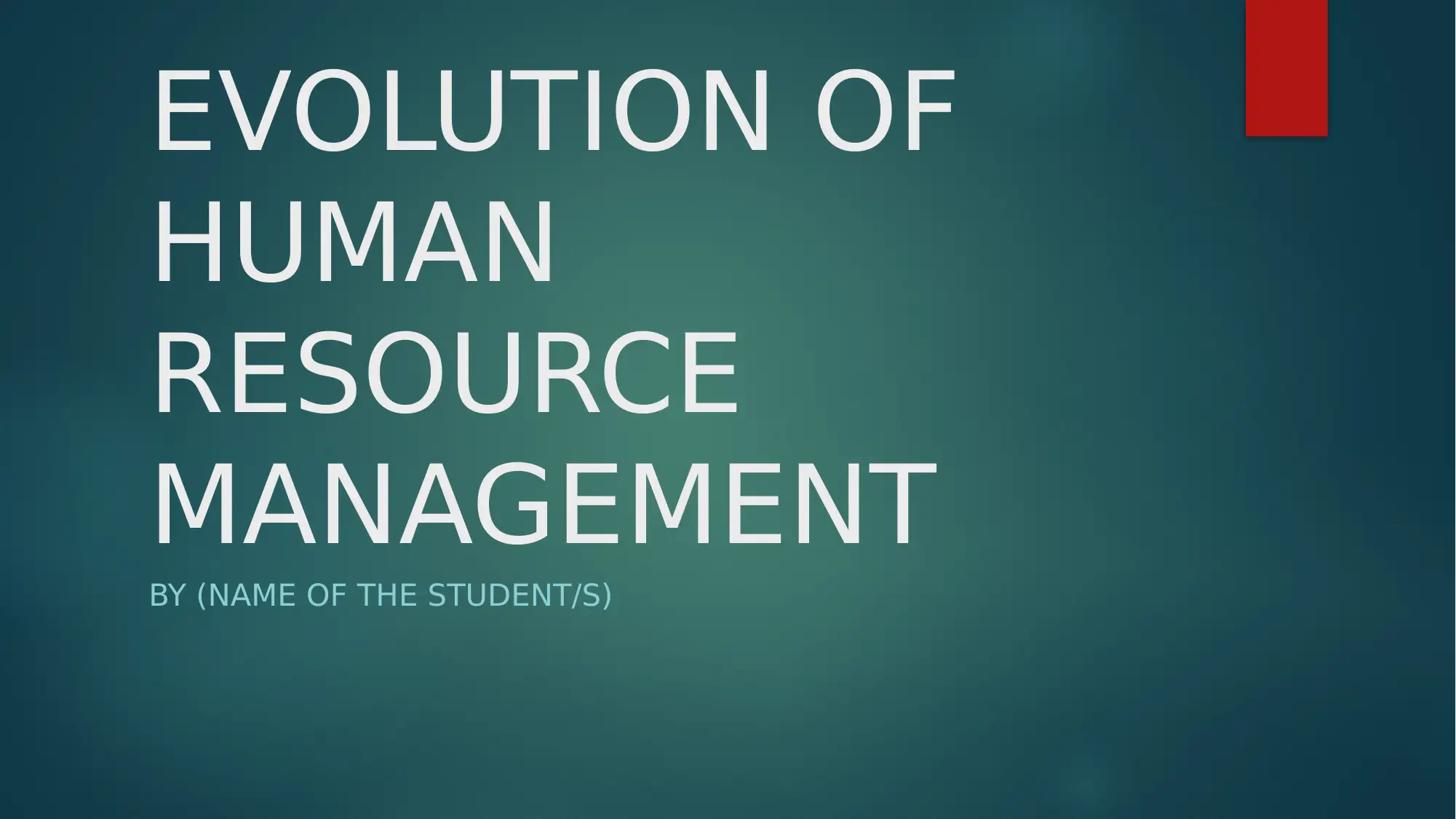
EVOLUTION OF
HUMAN
RESOURCE
MANAGEMENT
BY (NAME OF THE STUDENT/S)
HUMAN
RESOURCE
MANAGEMENT
BY (NAME OF THE STUDENT/S)
Paraphrase This Document
Need a fresh take? Get an instant paraphrase of this document with our AI Paraphraser

OVERVIEW OF HUMAN RESOURCE
MANAGEMENT
Human Resource management is the method of inducting new
employees within a company, after carefully recruiting them
according to their skillsets after making sure that they fit the job
profile and have the required qualifications.
They are also integral in appraising the employees after keeping a
track of their performance for an extended amount of time.
They also ensure that the employees are happy with their jobs and
try their best to make the work atmosphere suitable for them so that
the company can retain these people that they have trained.
MANAGEMENT
Human Resource management is the method of inducting new
employees within a company, after carefully recruiting them
according to their skillsets after making sure that they fit the job
profile and have the required qualifications.
They are also integral in appraising the employees after keeping a
track of their performance for an extended amount of time.
They also ensure that the employees are happy with their jobs and
try their best to make the work atmosphere suitable for them so that
the company can retain these people that they have trained.

EVOLUTION OF HUMAN
RESOURCE MANAGEMENT AS A
CRITICAL ISSUE
Human resource management is a relatively new concept with the
term being coined somewhere around 1980.
Earlier , the job scenario was highly individualistic and the
workforce that worked under people were not exactly managed.
They were mostly ordered around.
As Chiavenato (2001) puts it, it’s after the industrial revolution that
organized labor came into view, and this required proper
management of the people and regulation of their work environment
and the wages they were being paid started top gain importance.
RESOURCE MANAGEMENT AS A
CRITICAL ISSUE
Human resource management is a relatively new concept with the
term being coined somewhere around 1980.
Earlier , the job scenario was highly individualistic and the
workforce that worked under people were not exactly managed.
They were mostly ordered around.
As Chiavenato (2001) puts it, it’s after the industrial revolution that
organized labor came into view, and this required proper
management of the people and regulation of their work environment
and the wages they were being paid started top gain importance.
⊘ This is a preview!⊘
Do you want full access?
Subscribe today to unlock all pages.

Trusted by 1+ million students worldwide
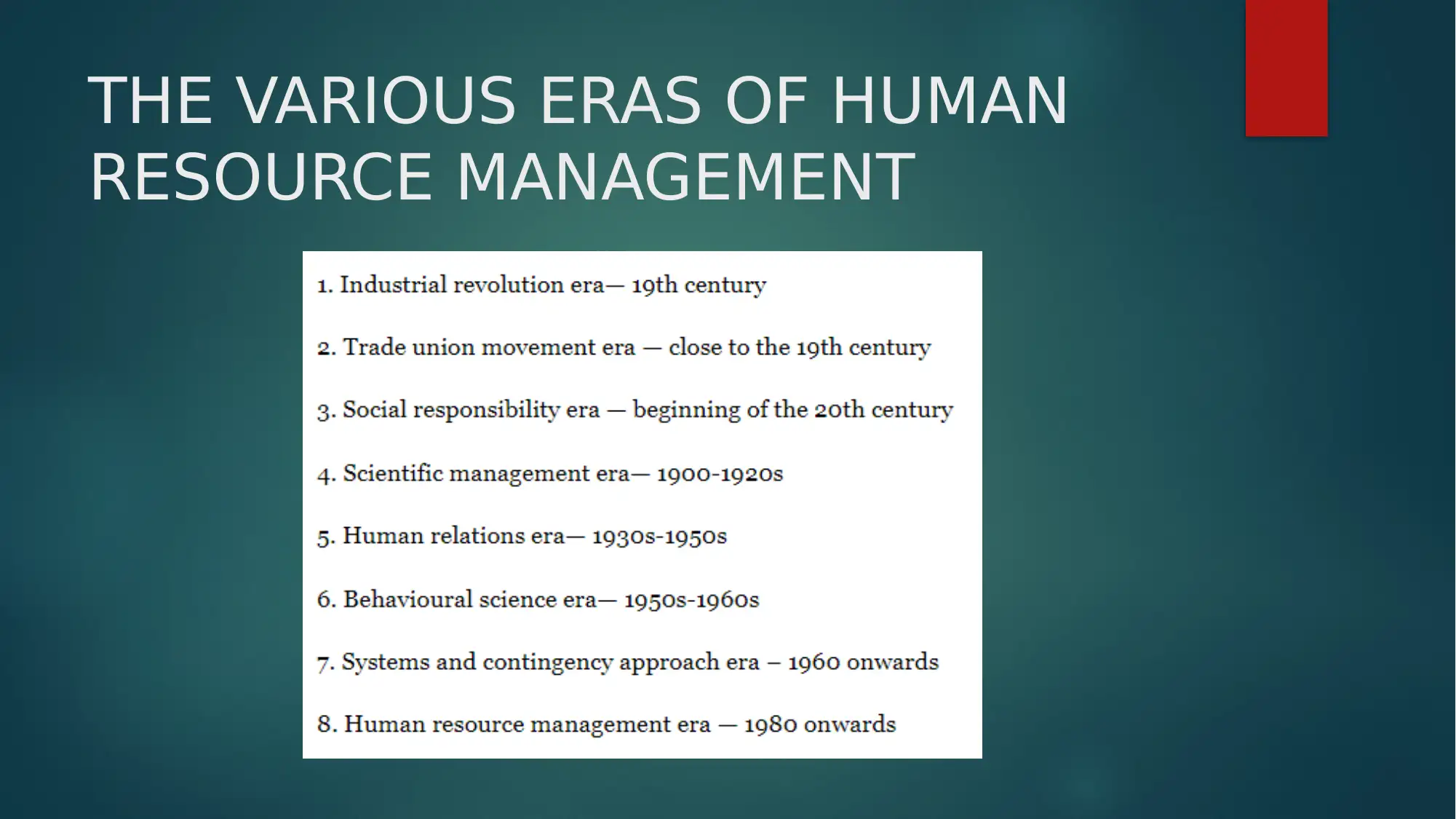
THE VARIOUS ERAS OF HUMAN
RESOURCE MANAGEMENT
RESOURCE MANAGEMENT
Paraphrase This Document
Need a fresh take? Get an instant paraphrase of this document with our AI Paraphraser
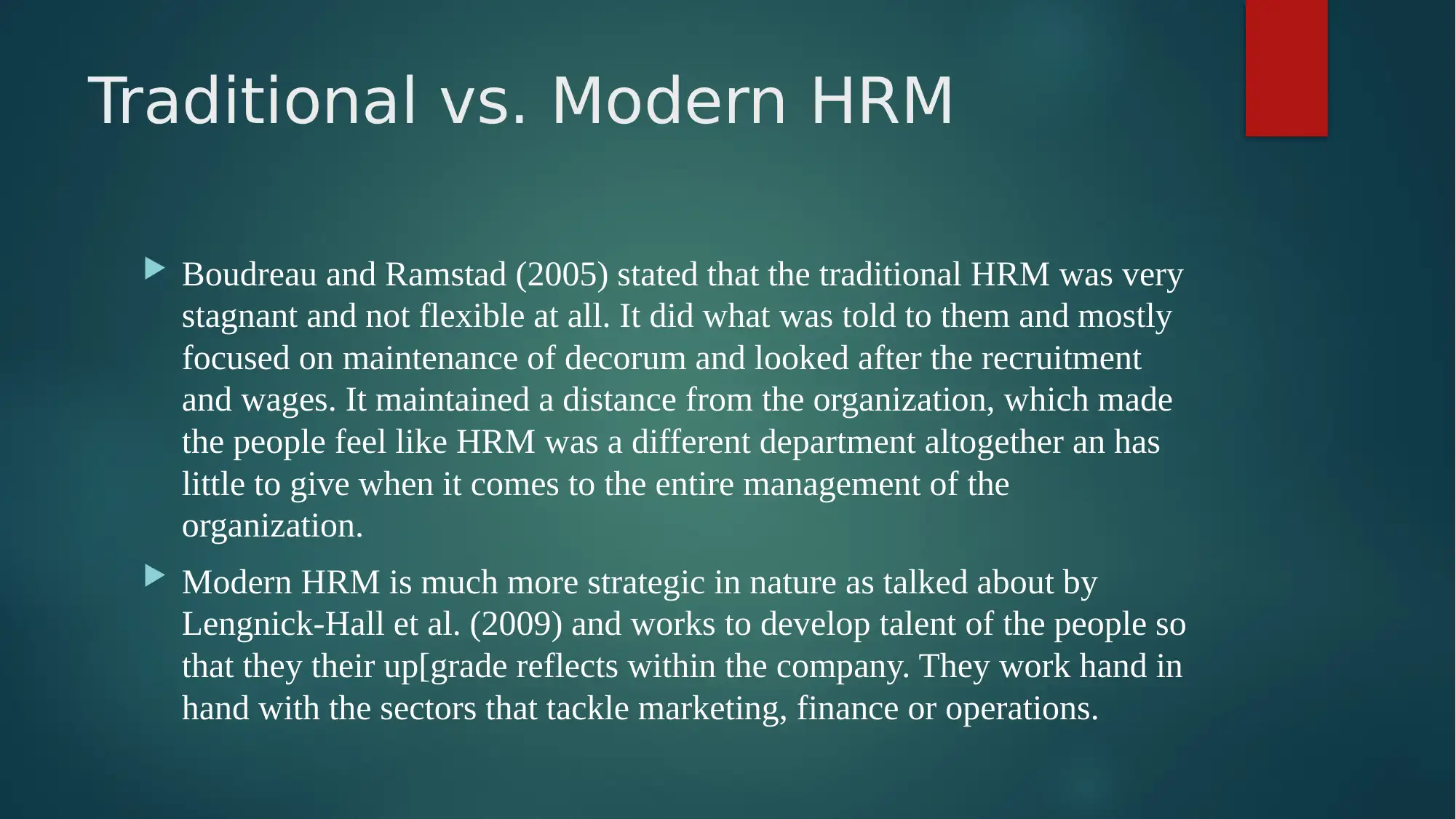
Traditional vs. Modern HRM
Boudreau and Ramstad (2005) stated that the traditional HRM was very
stagnant and not flexible at all. It did what was told to them and mostly
focused on maintenance of decorum and looked after the recruitment
and wages. It maintained a distance from the organization, which made
the people feel like HRM was a different department altogether an has
little to give when it comes to the entire management of the
organization.
Modern HRM is much more strategic in nature as talked about by
Lengnick-Hall et al. (2009) and works to develop talent of the people so
that they their up[grade reflects within the company. They work hand in
hand with the sectors that tackle marketing, finance or operations.
Boudreau and Ramstad (2005) stated that the traditional HRM was very
stagnant and not flexible at all. It did what was told to them and mostly
focused on maintenance of decorum and looked after the recruitment
and wages. It maintained a distance from the organization, which made
the people feel like HRM was a different department altogether an has
little to give when it comes to the entire management of the
organization.
Modern HRM is much more strategic in nature as talked about by
Lengnick-Hall et al. (2009) and works to develop talent of the people so
that they their up[grade reflects within the company. They work hand in
hand with the sectors that tackle marketing, finance or operations.
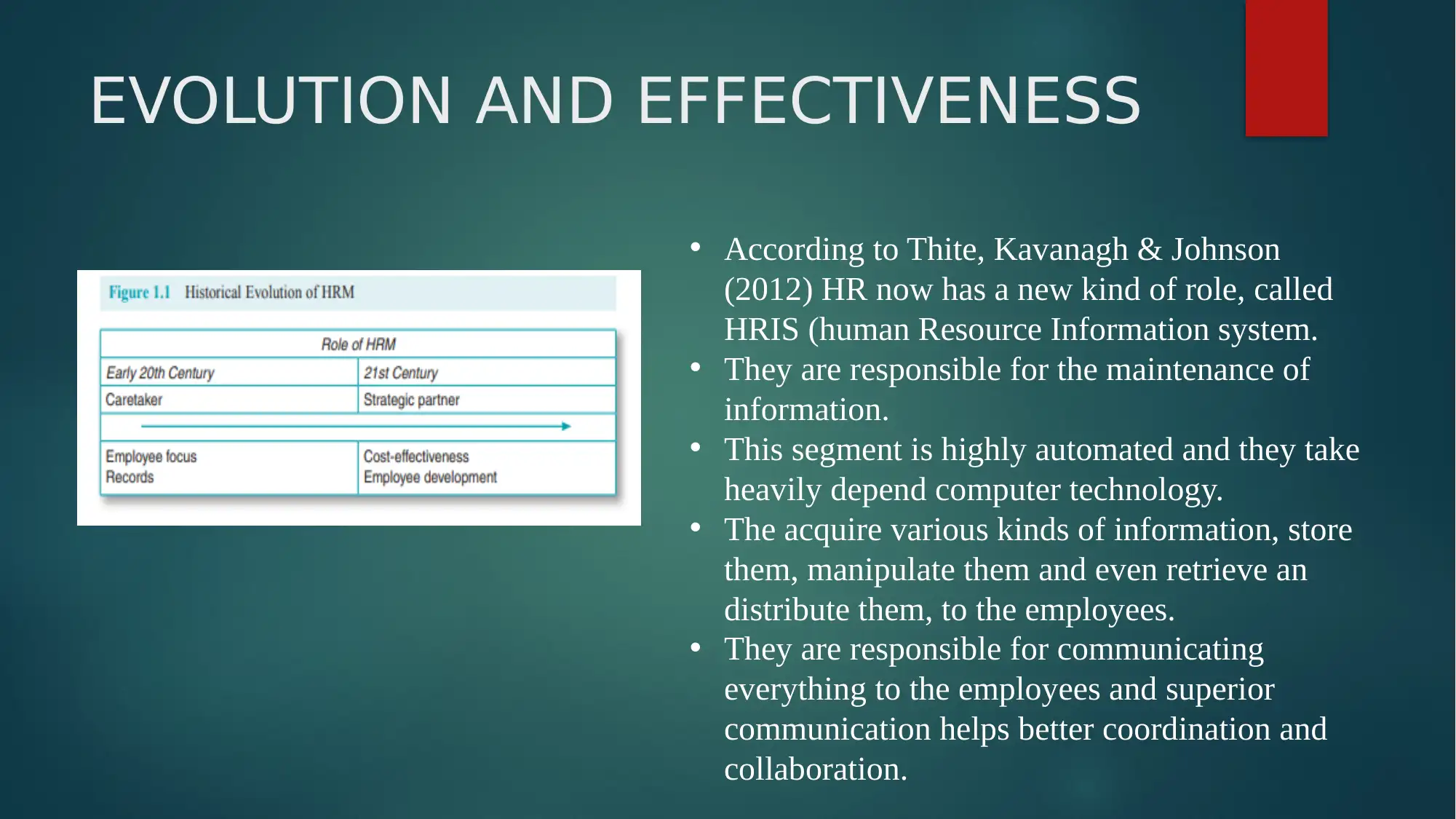
EVOLUTION AND EFFECTIVENESS
• According to Thite, Kavanagh & Johnson
(2012) HR now has a new kind of role, called
HRIS (human Resource Information system.
• They are responsible for the maintenance of
information.
• This segment is highly automated and they take
heavily depend computer technology.
• The acquire various kinds of information, store
them, manipulate them and even retrieve an
distribute them, to the employees.
• They are responsible for communicating
everything to the employees and superior
communication helps better coordination and
collaboration.
• According to Thite, Kavanagh & Johnson
(2012) HR now has a new kind of role, called
HRIS (human Resource Information system.
• They are responsible for the maintenance of
information.
• This segment is highly automated and they take
heavily depend computer technology.
• The acquire various kinds of information, store
them, manipulate them and even retrieve an
distribute them, to the employees.
• They are responsible for communicating
everything to the employees and superior
communication helps better coordination and
collaboration.
⊘ This is a preview!⊘
Do you want full access?
Subscribe today to unlock all pages.

Trusted by 1+ million students worldwide
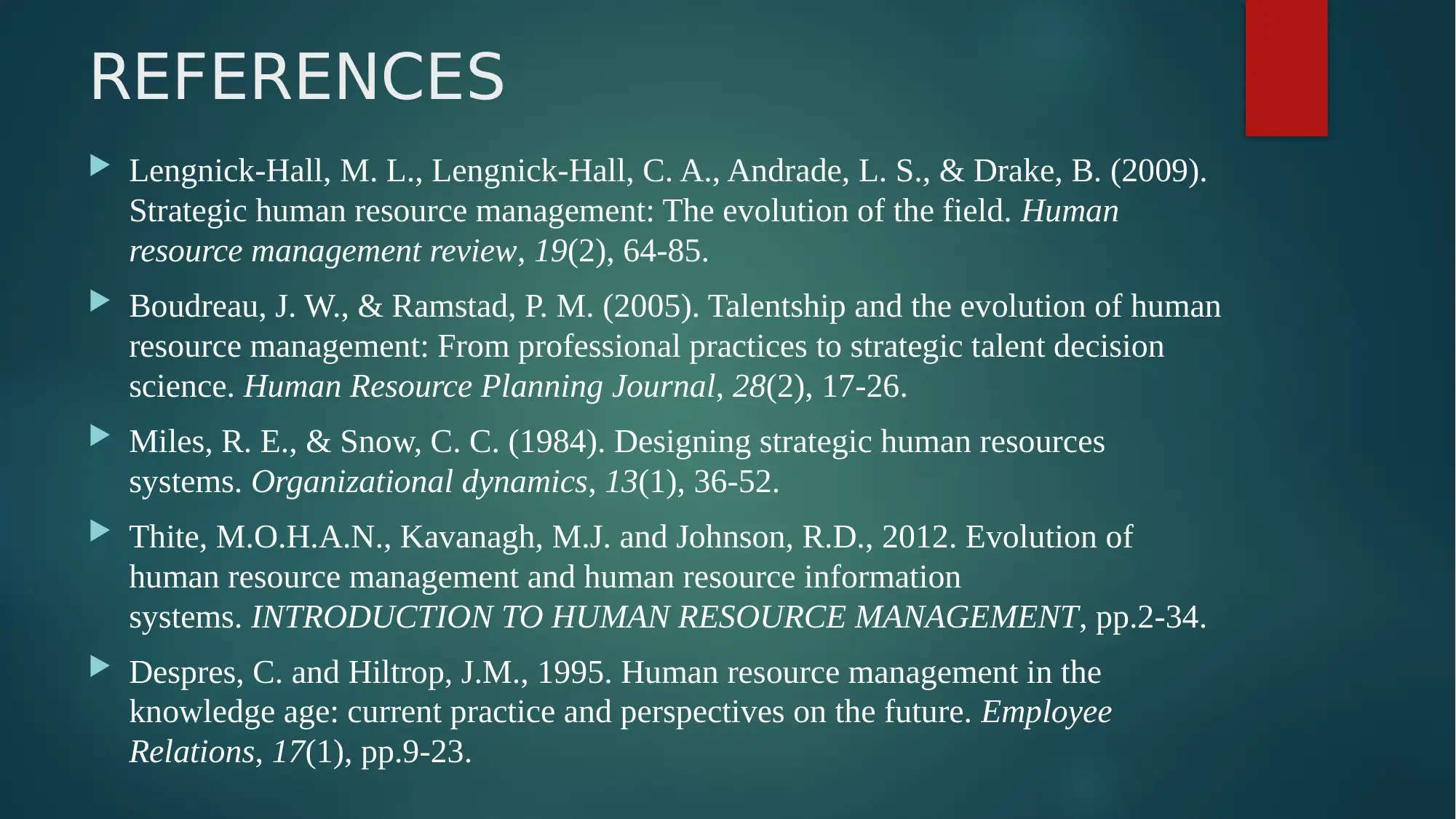
REFERENCES
Lengnick-Hall, M. L., Lengnick-Hall, C. A., Andrade, L. S., & Drake, B. (2009).
Strategic human resource management: The evolution of the field. Human
resource management review, 19(2), 64-85.
Boudreau, J. W., & Ramstad, P. M. (2005). Talentship and the evolution of human
resource management: From professional practices to strategic talent decision
science. Human Resource Planning Journal, 28(2), 17-26.
Miles, R. E., & Snow, C. C. (1984). Designing strategic human resources
systems. Organizational dynamics, 13(1), 36-52.
Thite, M.O.H.A.N., Kavanagh, M.J. and Johnson, R.D., 2012. Evolution of
human resource management and human resource information
systems. INTRODUCTION TO HUMAN RESOURCE MANAGEMENT, pp.2-34.
Despres, C. and Hiltrop, J.M., 1995. Human resource management in the
knowledge age: current practice and perspectives on the future. Employee
Relations, 17(1), pp.9-23.
Lengnick-Hall, M. L., Lengnick-Hall, C. A., Andrade, L. S., & Drake, B. (2009).
Strategic human resource management: The evolution of the field. Human
resource management review, 19(2), 64-85.
Boudreau, J. W., & Ramstad, P. M. (2005). Talentship and the evolution of human
resource management: From professional practices to strategic talent decision
science. Human Resource Planning Journal, 28(2), 17-26.
Miles, R. E., & Snow, C. C. (1984). Designing strategic human resources
systems. Organizational dynamics, 13(1), 36-52.
Thite, M.O.H.A.N., Kavanagh, M.J. and Johnson, R.D., 2012. Evolution of
human resource management and human resource information
systems. INTRODUCTION TO HUMAN RESOURCE MANAGEMENT, pp.2-34.
Despres, C. and Hiltrop, J.M., 1995. Human resource management in the
knowledge age: current practice and perspectives on the future. Employee
Relations, 17(1), pp.9-23.
Paraphrase This Document
Need a fresh take? Get an instant paraphrase of this document with our AI Paraphraser

REFERENCES
Chiavenato, I., 2001. Advances and challenges in human resource
management in the new millennium. Public Personnel
Management, 30(1), pp.17-26.
Alcázar, F. M., Fernández, P. M. R., & Gardey, G. S. (2005).
Researching on SHRM: An analysis of the debate over the role played
by human resources in firm success. Management Revue, 213-241.
Manashree, C. (2019). Evolution of Human Resource Management
(HRM). Economics Discussion.
Chiavenato, I., 2001. Advances and challenges in human resource
management in the new millennium. Public Personnel
Management, 30(1), pp.17-26.
Alcázar, F. M., Fernández, P. M. R., & Gardey, G. S. (2005).
Researching on SHRM: An analysis of the debate over the role played
by human resources in firm success. Management Revue, 213-241.
Manashree, C. (2019). Evolution of Human Resource Management
(HRM). Economics Discussion.

THANK
YOU
YOU
⊘ This is a preview!⊘
Do you want full access?
Subscribe today to unlock all pages.

Trusted by 1+ million students worldwide
1 out of 9
Related Documents
Your All-in-One AI-Powered Toolkit for Academic Success.
+13062052269
info@desklib.com
Available 24*7 on WhatsApp / Email
![[object Object]](/_next/static/media/star-bottom.7253800d.svg)
Unlock your academic potential
Copyright © 2020–2025 A2Z Services. All Rights Reserved. Developed and managed by ZUCOL.





